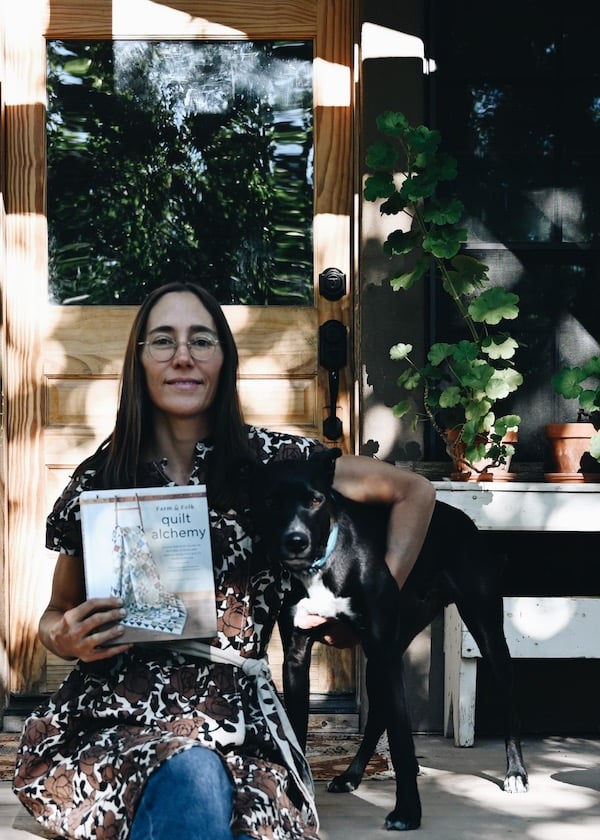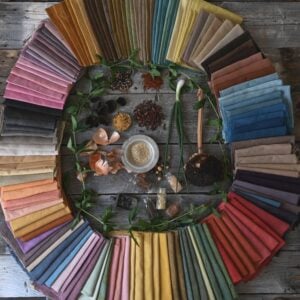For Sunday Visit, Botanical Colors sits down for an interview with a luminary in the natural dye, textile and art world. This week we sit down again with our inspiring friend Sara Buscaglia of Farm & Folk. Sara is an organic farmer, natural dyer and textile artist residing in the high desert of southwest Colorado. Her inspiration is found in the paradigm shifting slow processes of tending soil, seeds, and plants. Through her experience of being directly connected to food, natural color and fiber she has gained an understanding and appreciation of their true value. We hope you join us for her upcoming workshop in 2025.
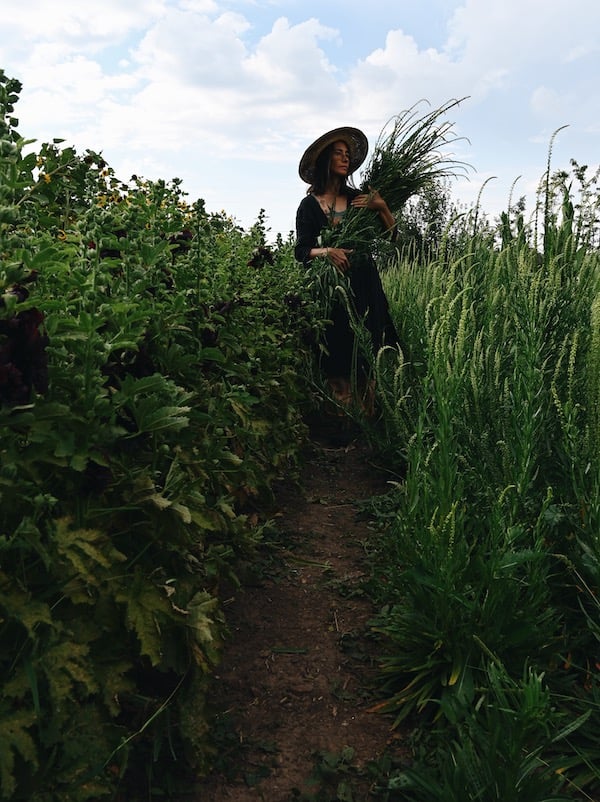
We are so excited to host you again for your Appliqué Dream Quilt Workshop. Can you tell us a little bit about why you enjoy this type of quilt making?
Thank you, I’m looking forward to returning and I’m grateful for the opportunity! I love the appliqué method of quilt making. It’s quite a bit different from the block by block method which is more of my go to method. With the block method I create dozens of blocks composed of shapes and pieces and then sew them all together in a grid to form the quilt. With the appliqué method I begin with a piece of fabric that is essentially a blank canvas and I’m able to cut and create any shapes and pieces I desire and place them anywhere on the canvas. I can move the pieces around and play with the design adding and subtracting elements until it looks and feels just right. There’s a lot of freedom in the appliqué method!
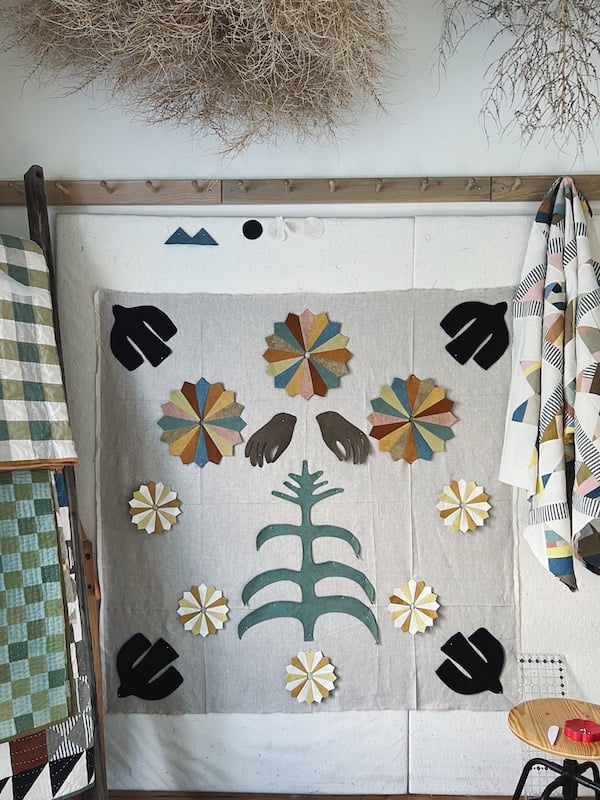
What does being a “folk” artist mean to you?
To me being a folk artist means that my influence, style, and techniques were born of traditions that have been passed on to me through my family and ancestors and culture. This is in essence what is commonly referred to as “self taught” but I feel like referring to it as “folk art” accredits those that came before me.
As a fellow lover of alchemy, I am drawn to your process of transferring nature into your pieces. Can you elaborate on how you embody this transformation in your craft?
I think it’s just inevitable! We are what we are exposed to. Being a farmer I partake in the most potent form of alchemy which is planting seeds and witnessing them burst forth from the soil to become food or dye plants which I then use in my work. So nature is literally infused into my work. On top of that, all the time I spend on the farm tending to the plants and being in, and one, with nature becomes my human experience which inevitably becomes what I express through my art.
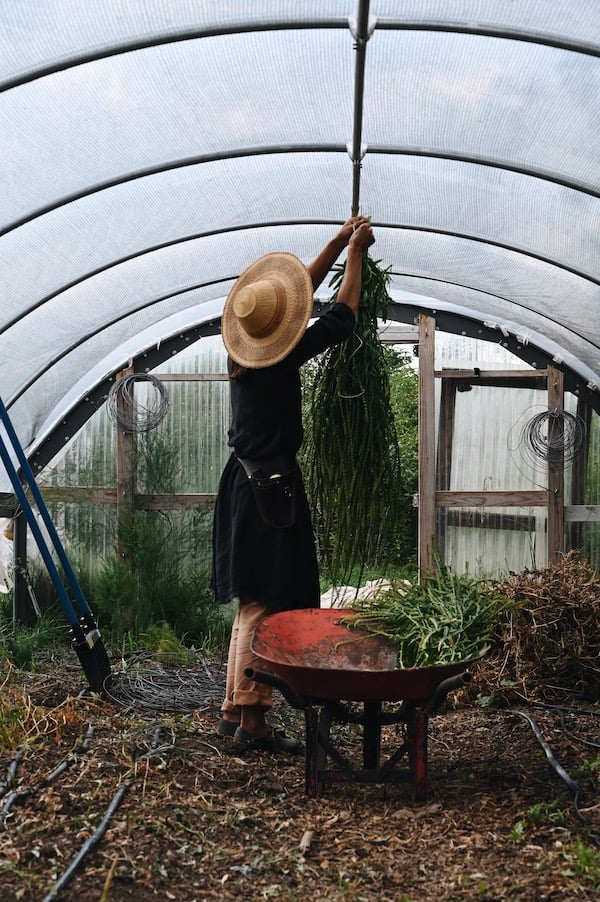
What is your first memory of yourself in relation to nature? Did you always have a knack for making, or was there a turning point for you?
I grew up in the suburbs in a neighborhood that was brand new so there were baby trees that were freshly planted but no big trees or canopies. My grandparents lived in a cottage in northern Michigan that had big old growth trees. This was my first memory of being called by nature. Those big old trees evoked such profound feelings. I didn’t know anything about mycelial networks or biodiversity at that time but I could feel their profoundness.
Making things always came naturally to me although I didn’t partake in it much myself growing up. My grandmothers and my mom were always making things so I was exposed to it in that way. When I was about 19 I asked my mom to teach me how to knit and I began making hats. I loved the magical process of turning string to a wearable garment and one craft led to another and another. Making things has become my lifestyle.
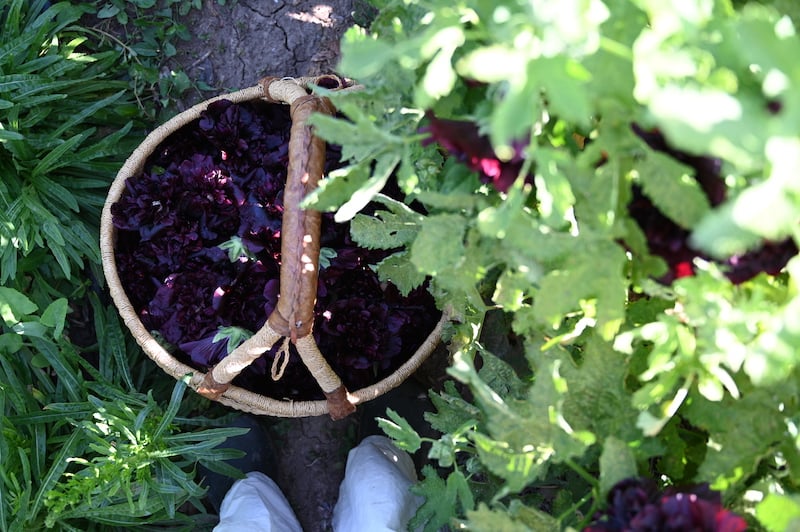
How did teaching first come into play in your practice? Can you tell us about what you enjoy about the teaching process?
I never thought I’d become a teacher. There’s so much time and planning and unseen work that goes into it and my passions are ultimately in farming and creating in the studio. When I was offered an opportunity to write a book I looked at it as a welcome challenge and opportunity to share the knowledge I had gained with folks who are interested in making naturally dyed quilts. When I first began experimenting with natural dyes applied to cellulose fabric yardage I had a difficult time finding answers to the questions I had. My book is essentially the book I was looking for at that time. Writing the book gave me the courage to take on teaching workshops and classes. Teaching will never be a huge part of my work because being a farmer keeps me rooted to the land here. My favorite part of teaching is connecting with folks who are interested in textiles and natural dyes and sharing a bit of my experience with them that they can take and make their own and share with others to keep it all moving forward.
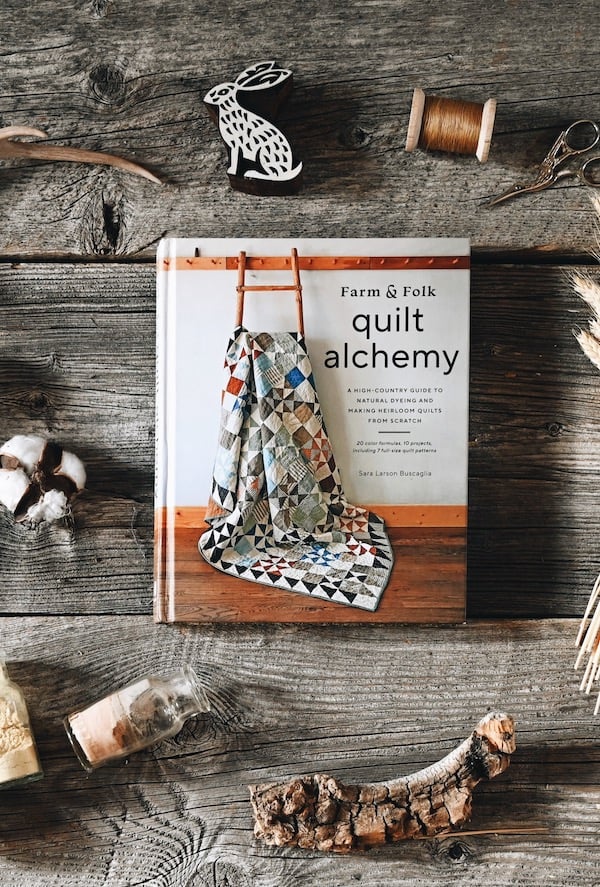
What advice would you give little Sara?
I was taught somewhere along the way that being an artist is something that only some people can be, as in you had to be born with a special ability or gene and I definitely didn’t think I had it. I wish I could go back and tell little me that I was born with it. That humans are the most creative and curious beings and we are all born artists.
